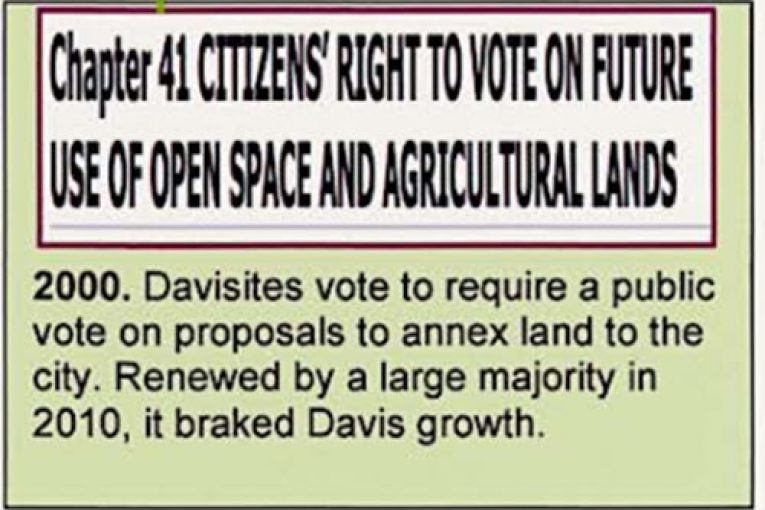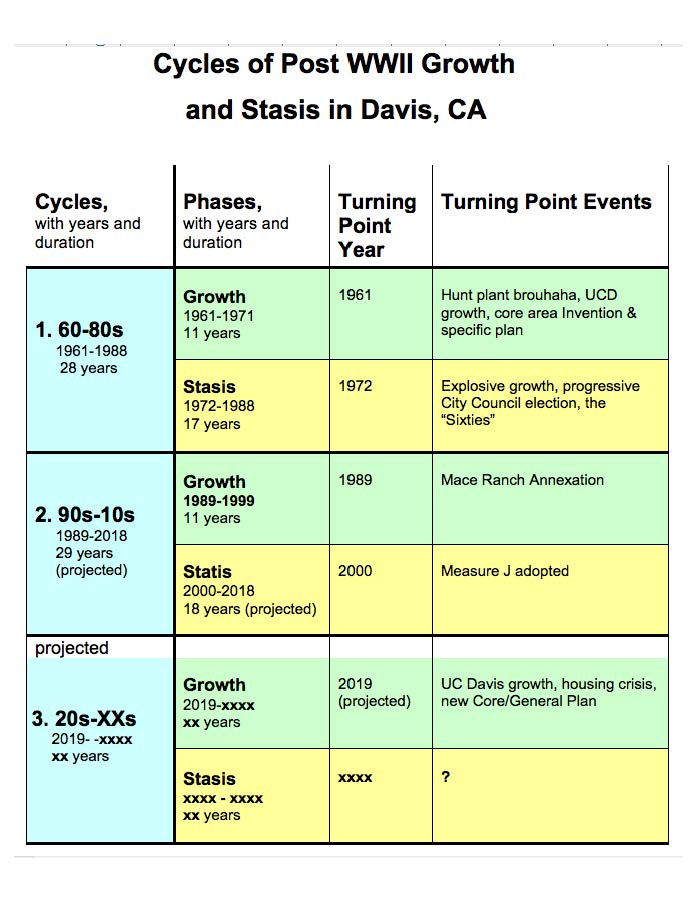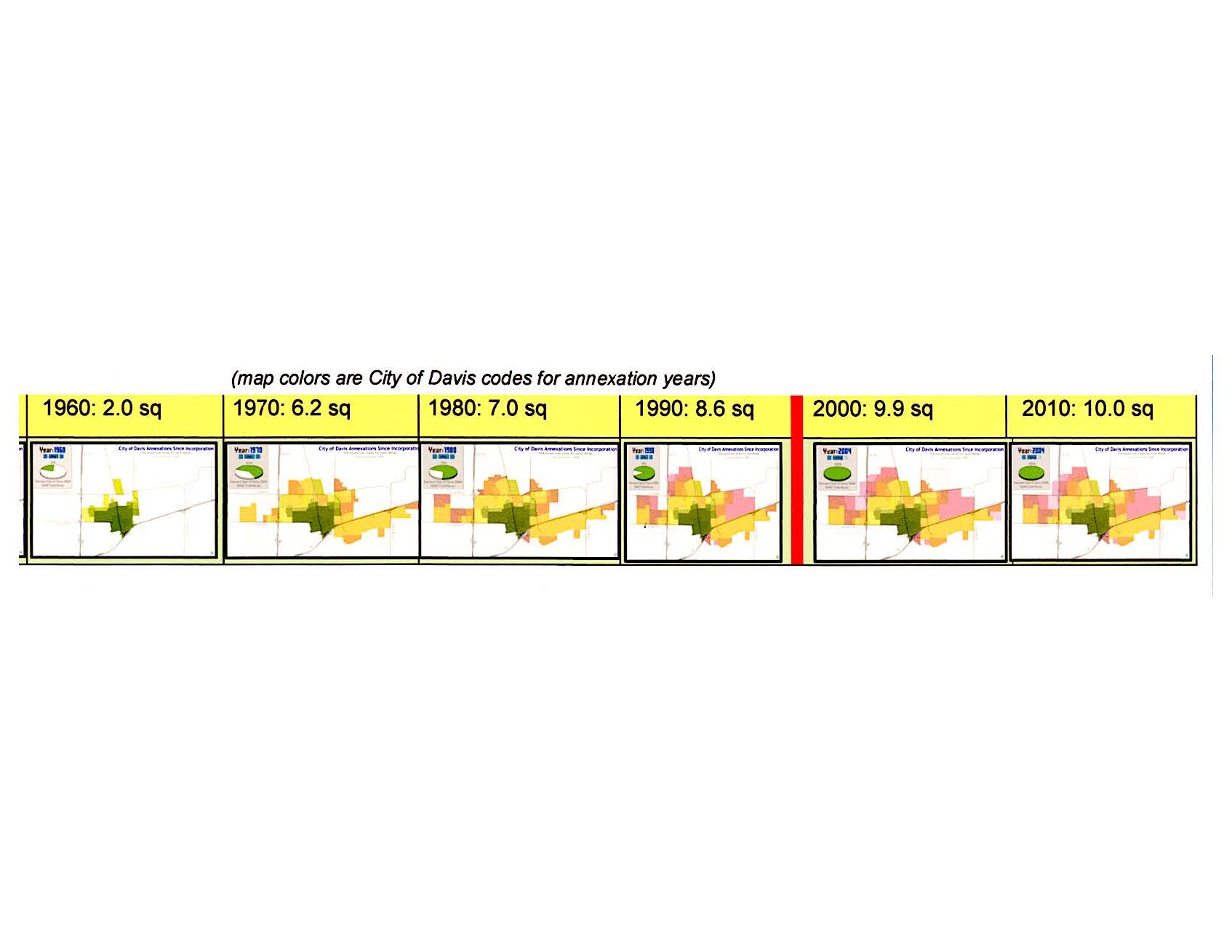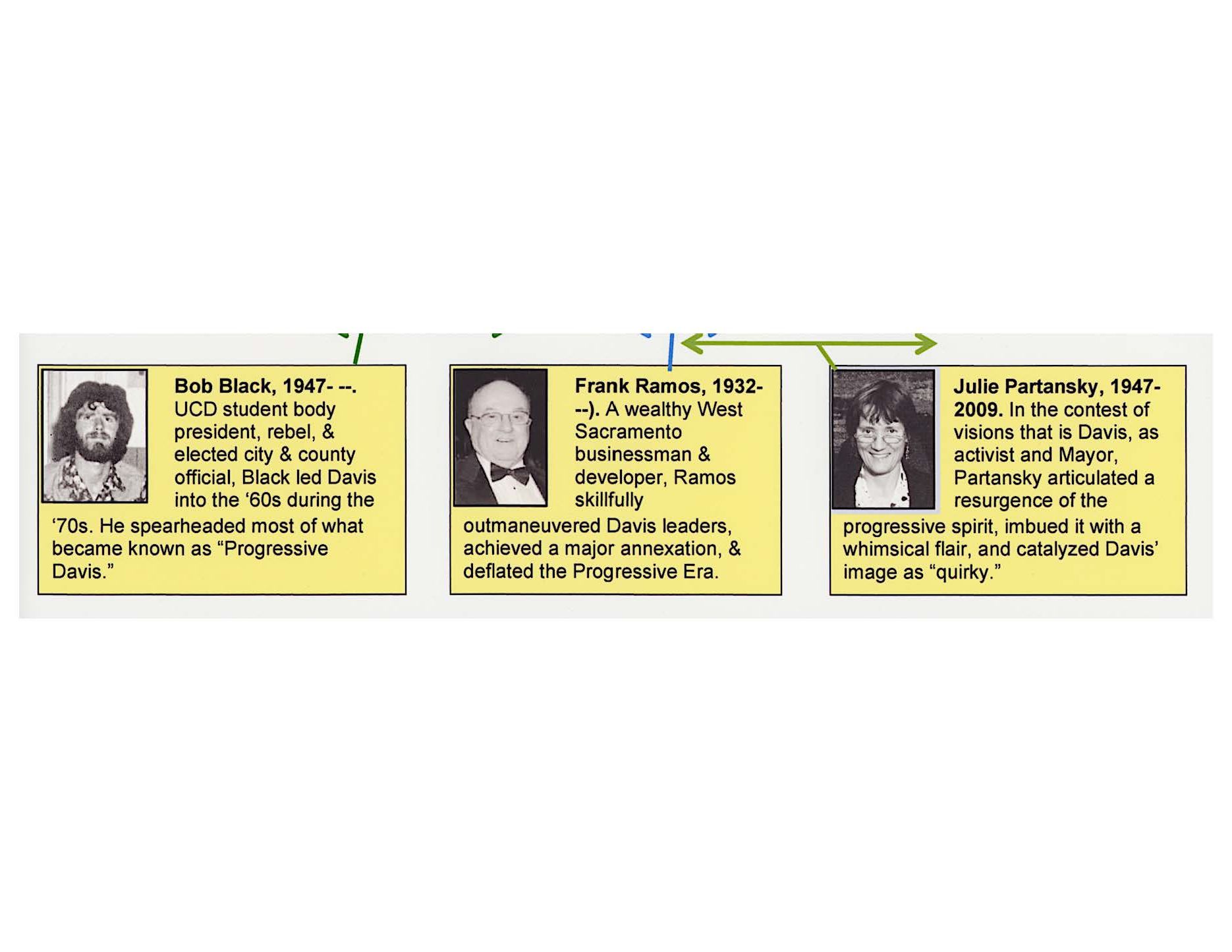
by John Lofland
(Editor’s note, this was originally published in 2018 on Professor Lofland’s Davis History Blog. Given the recent emergence of the growth issue and various housing proposals, it seemed like a good idea to revisit his thoughts from 2018).
I was looking over a summary of growth, growth control, and development events in the last some 70 years in Davis and the idea came to mind that the series of them formed two long-term, two-stage cycles.
Twice since WWII and today, a period of “growth” as a dominant mindset and policy was followed by a period of “stasis.” Eerily, the first or growth stage of each cycle is about 11 years long and the second or stasis stage is (or might be) just less than 30 years long.
This to suggest that Davis’ history of growth and development and reactions to it might not be merely “one damn thing after another.” Rather, it might exhibit systematic and repetitive patterns that deserve (or require?) characterization as a cycle, defined in one dictionary as “a round of years . . . in which certain events or phenomenon repeat themselves in the same order and at the same  intervals.”
intervals.”
A key feature of this cycle conception is that Davis might now be nearing the end of the second one. If It has the same “shape” in years as the first cycle, we should expect a third “great turning” in matters of growth and stasis within the next two years or so.
All of this is shown in overview in the accompanying chart titled “Cycles of Post WWII Growth and Stasis in Davis, CA.” Let me elaborate on what is shown there.
First Cycle. The first phase of the first stage — that of growth — started in the late 1950s and crystalized in the Core Area Plan of 1961.* It ran some 11 years, to 1972, when a reactive, “growth control” Council was elected and presided over a period of “stasis” that ran some 17 years. The entire cycle was about 28 years long.
I should explain that, among other things, the term “stasis” refers to “a state of stability, in which all forces are equal and opposing, and therefore cancel each other out.” Something of this kind was observed in Davis of the progressive era. Progressives held political control and had cultural dominance, but this was nonetheless fragile and outcomes were often uncertain. The same tenuousness is observed in the second cycle.
This tenuousness means that the dynamic of cycle change is not especially mysterious. The forces out of power in any phase nonetheless remain strong and it only takes the accumulation of grievances and missteps by whatever the dominant power to eventually swing control from growth to stasis and visa versa.
Second Cycle. The Mace Ranch annexation affair ushered in the first phase of the second cycle circa 1989. It ended by the adoption of Measure J in 2000, which initiated the second/stasis stage of the second cycle. As of this year, 2017, the second cycle has run 28 or so years.
A Third Cycle? There has clearly not yet been a “great turning” into a third cycle of a dominant growth mindset. But, could it be “just around the corner,” as is said?
This possibility is not far-fetched, I think, because Davis officials are orchestrating a Core Area (and General Plan) revision process that might well become a vehicle for a large and wrenching turning of the dominant policy mindset back to growth. I notice that the City Council authorizing resolution contains sections titled “Alternative visions” and “Land use map alternatives.” These provisions call for creation of “alternative visions and goals [that] are anticipated to be described in words and general graphics.” * *
We know that a significant number of articulate and vigorous Davis residents advocate such a great turning toward growth. They are about to be handed a forum for advocacy and their chance to work toward the start of a third cycle.
December, 2019, is given as the vision update completion date. So, between now and then, Davis may enter into its third great cycle of growth and stasis. If so, the second cycle would have run 29 years, as compared to 28 years for the first one.
Depictions of “cycles” such as I give here are distortions to the degree they suggest that humans are only unknowing ciphers within larger and overwhelming social patterns that move independently of the participants’ wills.
The reality is that these seeming impersonal larger patterns are only summaries of millions of acts of political will that have the results we can caption “cycles” or whatever.
It is difficult overly to stress that whether or not the second cycle ends and a third cycle begins will be a function of the degree of political will and skill on both sides
— those of growth and of stasis — not of some hidden hand that guides larger social patterns.
Even so, it can be helpful to know when the “winds are at your back” or not.
John Lofland, Originally Published on Davis History Today Blog, Number 274, 2018
* Excerpts depicting relevant events, people, areas, and population from Davis History Timeline appear appear above and below in this post. The entire Timeline can be viewed and downloaded at:
https://get.google.com/albumarchive/110278657375889577976/album/ AF1QipNbeOMu8dNOQ2MGJ9yqoNtxxVAw8BYxWOgRnew7/AF1QipPDYSs4O- wiI1-GHzbXtHg9X-i2OhkWN9t3xShB?source=pwa#5754764597549975410
** Davis City Council Resolution No 17-002, Series 2017, “Preliminary Directions For Core Area Policy/Code Amendments,” City of Davis, January 10, 2017, page 5.





